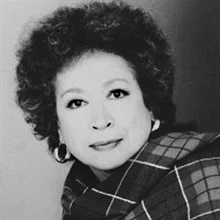Play Club: Wedding Band

About Play Club
A book club – but plays! Join Long Wharf Theatre’s Artistic Associates Cheyenne Barboza & Kate Moore Heaney, along with guest artists, as we discuss a featured play each month. Play Club scripts dive into Long Wharf Theatre’s archive as well as provide a glimpse into its future. Come join this virtual discussion with fellow LWT theatre lovers from the comfort of your own home!
This is an exclusive member event. Not a member? Become one today!
About the Play
Wedding Band’s multilayered story revolves around an interracial couple, Julia and Herman, who have loved each other devotedly but have also endured harsh, sometimes life-threatening disapproval from whites and scorn from blacks. When Julia moves out of self-imposed rural isolation into a Charleston enclave of black women and children, she and Herman must confront the impossibility of ever retreating into a private oasis amid a sea of Jim Crow segregation barely two generations removed from slavery. As Herman falls ill, Julia gradually reaches out to forge affirming bonds of solidarity with her neighbors.
This selection was curated by one of our Artistic Ensemble Members, Awoye Timpo, who created the Classix Catalog. We’re eager to introduce Play Clubbers to the work of Alice Childress.
About the Playwright

Alice Childress
she/herBorn Alice Herndon in Charleston, S.C., Oct. 12, 1916, although her birth year is sometimes listed as 1912 and 1920, she moved to Harlem in 1925, after her parents separated, to live with her grandmother. She dropped out of high school after the deaths of her mother and grandmother, who had inspired her to become a writer.
To survive, Childress took on an assortment of jobs, with the overall intention of making enough money to become an actress. She was still a teenager and studying acting when in 1934 she married Alvin Childress, himself an aspiring actor who would go on to portray Amos in the “Amos N’ Andy” television show. Soon she was a member of the American Negro Theater under the auspices of Frederick O’Neal and Abram Hill, with a role in the original company of “Anna Lucasta.”
In 1944, when the play was staged on Broadway, she was nominated for a Tony for Best Supporting Actress. But soon she, like so many African-American females on stage and screen, was exasperated by the absence of redeeming plots or characters. The scarcity of fulfilling roles might have been the incentive to write her own plays. (Full bio)







